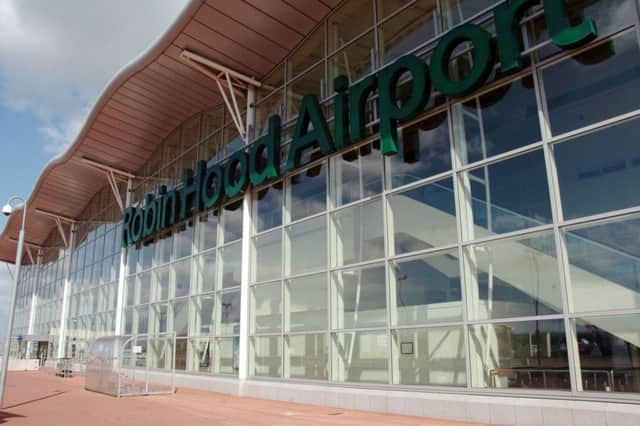Mid-air crash over Doncaster '˜narrowly avoided' as pilot aided passenger with sick bag


The pilot of the single engine Robin 2160 aeroplane said he had not seen the larger, twin-engine aircraft, in the near miss moments after trying to get a sick bag for his passenger, a report has revealed.
The report suggested an air traffic controller was “not effectively integrating” the two planes during the near miss that happened between Doncaster and Worksop, over airspace monitored by Doncaster Robin Hood Airport.
Advertisement
Hide AdAdvertisement
Hide AdThe single-engined Robin 2160 had just been given clearance to enter Doncaster airspace when it hit a patch of haze and one of the passengers became airsick at around 9.30am on October 16 last year.
The report said: “He could not reach the sick bag in a pocket near his left foot, so he loosened his straps and during this time he diverged from his heading.”
The air traffic controller asked him what he was doing, but the radio channel was busy with other aircraft, including a plane with a similar call sign, which meant the pilot was unsure if he was being spoken to.
He didn’t see the aircraft involved in the near miss and was not told to take any evasive action.
Advertisement
Hide AdAdvertisement
Hide AdThe pilot of the twin-engined PA31 aeroplane was getting read for his final approach into the airport, when his passenger said: “Look out, aircraft ahead.”
The report said the pilot didn’t see the aircraft at first, but around two seconds later it appeared dead ahead of him.
The aircraft was then asked to head towards either Sheffield or Sandtoft, North Lincs.
According to the report, the pilot in the small aircraft hadn’t told air traffic control that it had flow into cloud or they had issues with airsickness.
Advertisement
Hide AdAdvertisement
Hide AdThe report said: “Notwithstanding the fact that the Robin pilot would still have maintained a robust lookout, the cause was determined therefore to be that the controller did not effectively integrate the Robin with the PA31.”
Safety margins had been “much reduced below the norm”, the report added.
The investigation was carried out by the UK Airprox Board, which looks into near misses that happen in the UK.
A spokesperson for Robin Hood airport said: “The Air Traffic Controller involved immediately reported their error and as part of agreed local and national protocols has since successfully undertaken a period of retraining.
Advertisement
Hide AdAdvertisement
Hide Ad“In addition, as part of Air Traffic Control Services Limited commitment to its safety culture, a local investigation has been completed too see what if any lessons can be learned in order to reduce the likelihood of a similar event.”